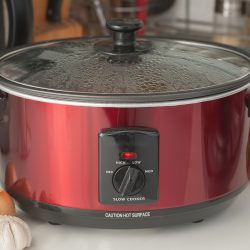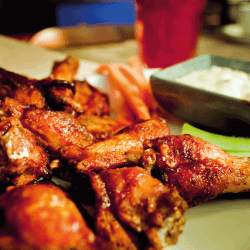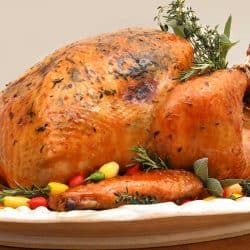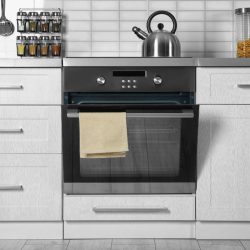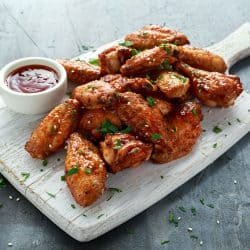Knowing which side is breast-up on a turkey is vital to ensure you cook it properly. Would you like to know what side is breast up on a turkey? Well, we have researched this question and have the answer for you.
You can tell your turkey is breast up if the legs point up, and you can see the breasts. Your turkey is upside down if you see the spine and the wings point up.
In this article, we will learn what side is breast up on a turkey. We will also learn the answers to other interesting related questions, such as whether you cook your turkey breast side up or down and how you keep your turkey breast from drying out? Keep reading to learn more.

What Side Is Breast Up On A Turkey?
When trying to identify what side is breast up on a turkey, you need to examine the position of several parts of the turkey. Let's look at the several parts of the turkey we can use to identify the orientation of your turkey.
The Legs
The legs are one of the best areas to identify what side is breast up on a turkey quickly. If the legs are close to the top of the turkey and point up, your turkey is breast up.
If the legs are pointed down and low on the turkey, your turkey is breast down.
Since many like to cook their turkeys breast up, there is a saying to help people remember which way the legs should point. The expression goes, "The turkey is dead, so its legs should point up and not down towards the ground to run away."
Not everyone likes to cook their turkey breast up, so the expression doesn't work for everyone.
The Wings
Another reliable way to determine breast up on your turkey is locating the wings. The wings on a turkey that is breast up should be low and close to the bottom of the turkey.
If your turkey's wings are high in the air, your turkey is breast down. Many say that if the wings are pointed up, the turkey might fly away as a clever way to remember to keep their turkey breast up.
Once again, this only works if you are cooking your turkey breast up.
The Breasts
A great way to tell if your turkey is breast up is to locate the breasts. The breasts on a turkey are large and curved. If you look at the top of the turkey, it's flat and boney, its breast down.
The Spine
If you still aren't sure if your turkey is breast up or down, look for the spine. If you can see the spine running down the back of your turkey, it is breast down.
The breast bone can sometimes be confused for the spine, but while both are hard, the spine has bumpy segments that the breast bone doesn't.
Should You Cook Your Turkey Breast Side Up Or Down?
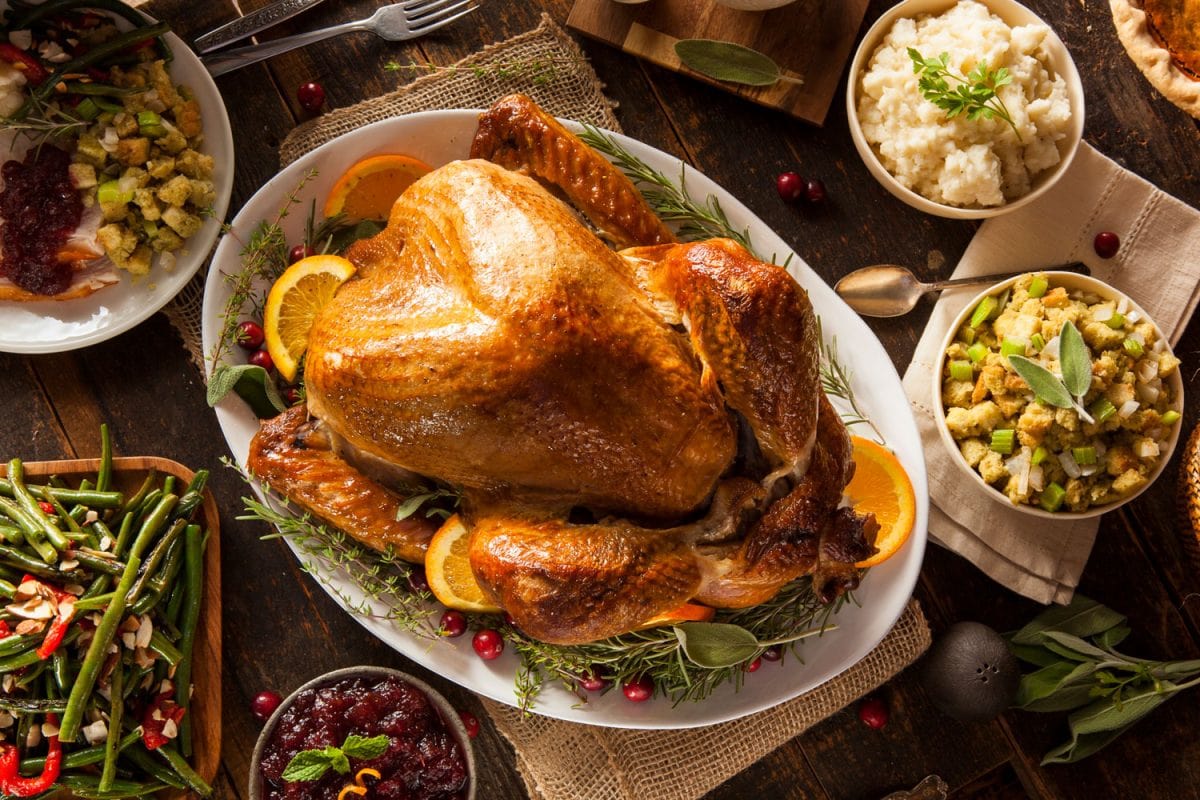
Whether you cook your turkey breast side up or down is more preferred, but one method is easier than the other. There are some pros and cons to both ways, so let's look at both the breast up and down approach and see how they compare.
Breast-Side Up
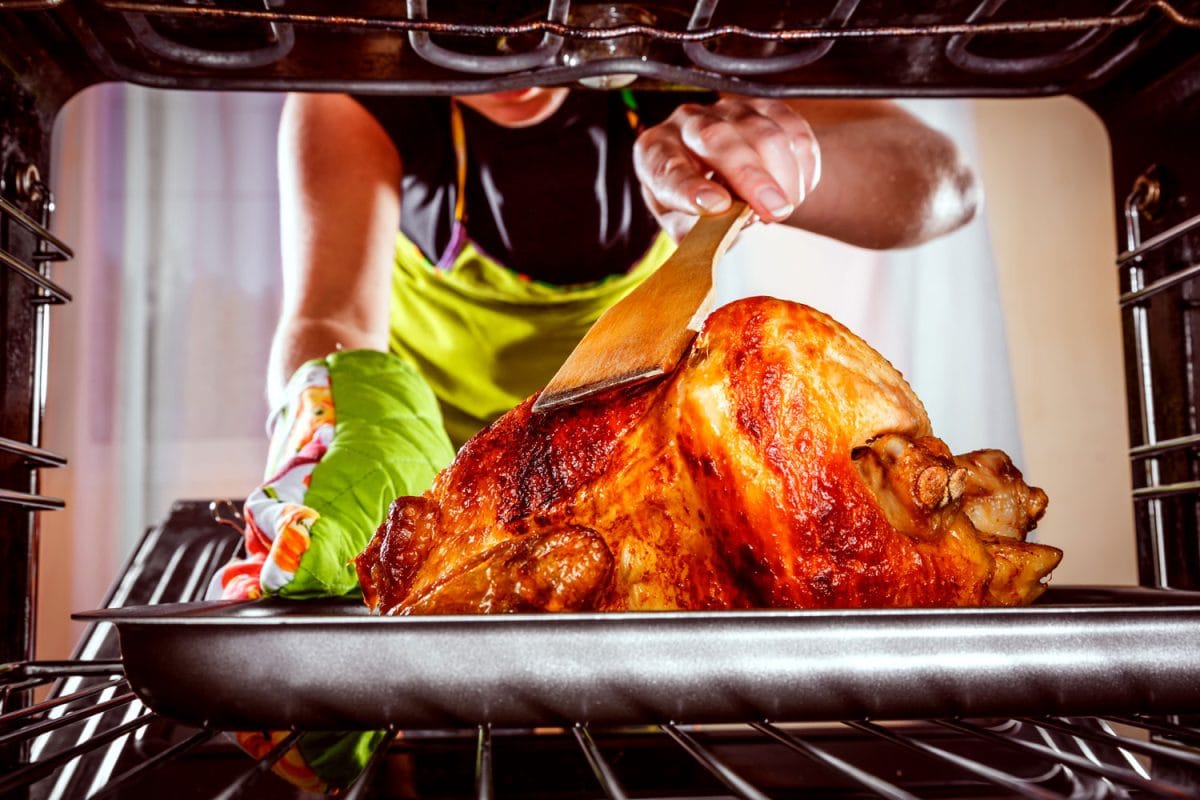
Breast-side up is one of the most traditional ways to cook your turkey. While this is the tried and true method for cooking a turkey, it does have its disadvantages.
Let's look at how the breast-side up method excels and how it could do better.
Pros
One of the main pros of a breast-side-up turkey is how it looks. The breasts exposed to air and heat become darker and golden. If you want the most appealing-looking turkey, you should cook it breast up.
Another advantage to the breast-up method is the development of a crust. The breasts exposed to the heat develop a hard crust that holds the juices. This can counteract the drying effect on the turkey breasts.
Also, with breast up being the most used method, there is a lot of knowledge on how to best cook it.
Cons
While cooking turkey breast up is the oldest and most used method, it does have its flaws, one of which is dry white meat.
When cooking turkey, the breasts are elevated into the oven's heat and get more cooked than other parts of the turkey, making dry turkey breast the number one complaint about a Thanksgiving turkey each year.
Breast Side Down
There is a new, more modern way to cook a turkey that has become popular in the last few years. Cooking your turkey breast side down has become a trendy fad that promises to deliver juicy turkey breasts.
Let's learn the pros and cons of this different method of cooking a turkey.
Pros
Cooking turkey breast side down does make the turkey breast moister. The breast is moister because the juices from the turkey drip into the turkey breast as it cooks.
Cons
While cooking a turkey breast side down does give you a more juicy turkey breast, that is where the advantages end.
One of the first issues with cooking a turkey breast side down is the look. With the breast down, the skin on the breast won't turn brown. This will give you a less appealing-looking turkey.
There is a method to resolve a breast side down turkey's appearance, but its drawbacks. Place the turkey upside down for part of the cooking time and then flip it.
This will allow the turkey breasts to be juicier while giving the turkey skin a chance to brown.
The main issue with flipping a turkey is challenging and dangerous. Attempting to flip a three-hundred-degree twelve-pound bird can cause a hot splashback that can burn you.
If you decide to go this route, you can try to wrap oven mitts in aluminum foil and carefully flip it over.
Verdict
While cooking your turkey breast side down gives you juicer breasts, it also has many drawbacks, from an off appearance to being more dangerous. It would be best if you cooked your turkey breast side up.
How Do You Keep Your Turkey Breast From Drying Out?
If you want to keep your turkey breast from drying out should try using brine. Brines can be either wet or dry, and both will keep your turkey breast from drying out by creating a crust on your turkey that holds in moisture.
Let's look at using both wet and dry brine for your turkey.

Wet Brine
A wet brine is made by combining salt with water. Often your brine should contain as much salt as will dissolve in water. You can also add spices and seasonings to your brine to add a flair of flavor to your turkey.
Before putting your turkey in the oven, pour your wet brine over your turkey so that it wets every part of the turkey. Some people like to use a spray bottle ensures their turkey is evenly coated in brine.
Then cook the turkey as usual. The salt will help seal in moisture and ensure your turkey breasts don't dry out.
Dry Brine
A dry brine has the same effect as a wet brine but is slightly more effective at sealing moisture. A dry brine is made by combining kosher salt with any desired seasonings and spices.
Then the dry brine is rubbed over the turkey's skin two days before cooking.
The two days give the salt time to incorporate into the turkey and make the brine more effective. Some have found that three days with the brine before cooking makes the skin even crisper and the turkey juicier.
What Is The Best Temperature For Cooking A Turkey?
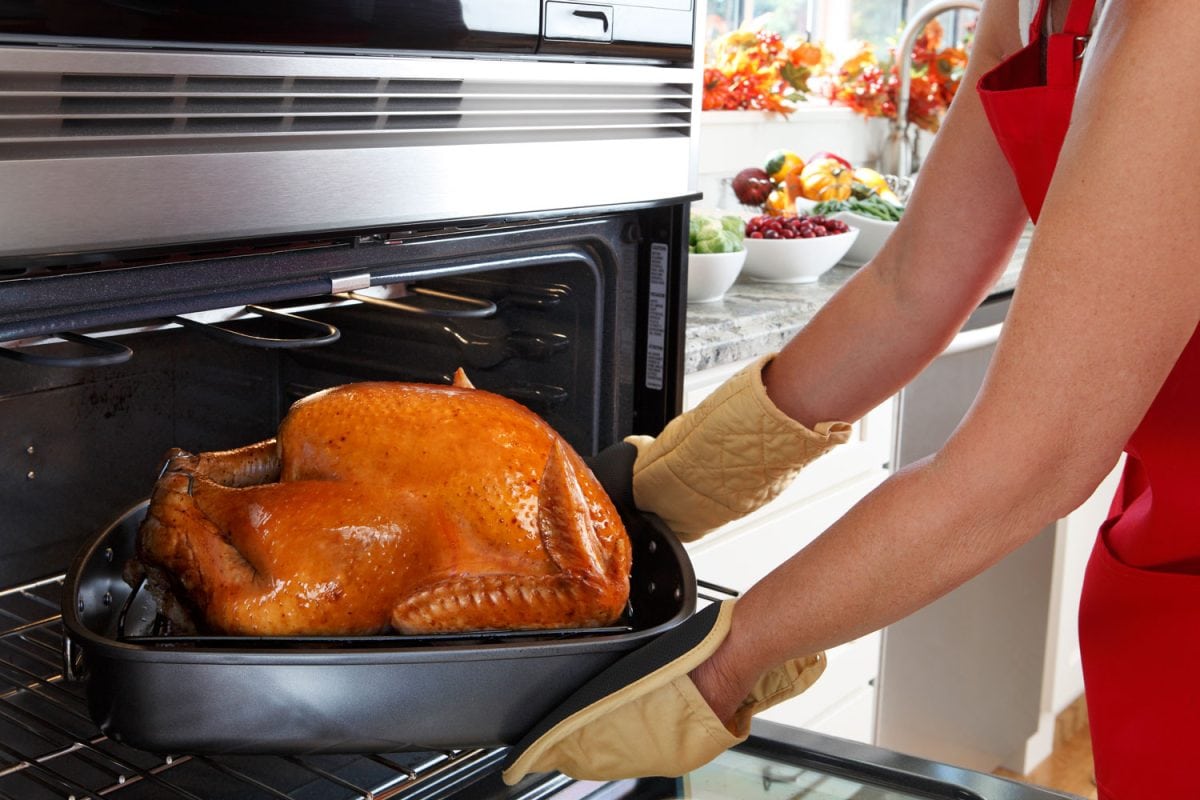
There are three main temperatures to cook a turkey, and each gives you different results. Let's look at the three most used temperatures for cooking turkey and see how they compare.
325 Degrees Fahrenheit
At 325 degrees Fahrenheit your turkey should be tender and soft. While the meat should be tender, the longer cook time required at 325 and the smoother skin allow more moisture to escape, leading to drier turkey breasts.
You can combat dry turkey breasts by using brine.
350 Degrees Fahrenheit

At 350 degrees Fahrenheit your turkey will be less tender, but more juice will remain in the turkey breasts. It is essential to check the turkey is fully cooked since the higher temperatures can lead to a more cooked outside and a less cooked center.
400 Degrees Fahrenheit
Cooking the turkey at 400 degrees Fahrenheit will give you a tougher turkey and cause your turkey skin to harden and seal in the juices.
While some don't care for the tougher meat, cooking at 400 degrees Fahrenheit will provide you will the juiciest turkey breasts.
Verdict
Cooking at lower temperatures will provide softer meat with the disadvantage of dryer turkey breasts while cooking at higher temperatures will give you tougher meat while locking in moisture.
To Finish Up
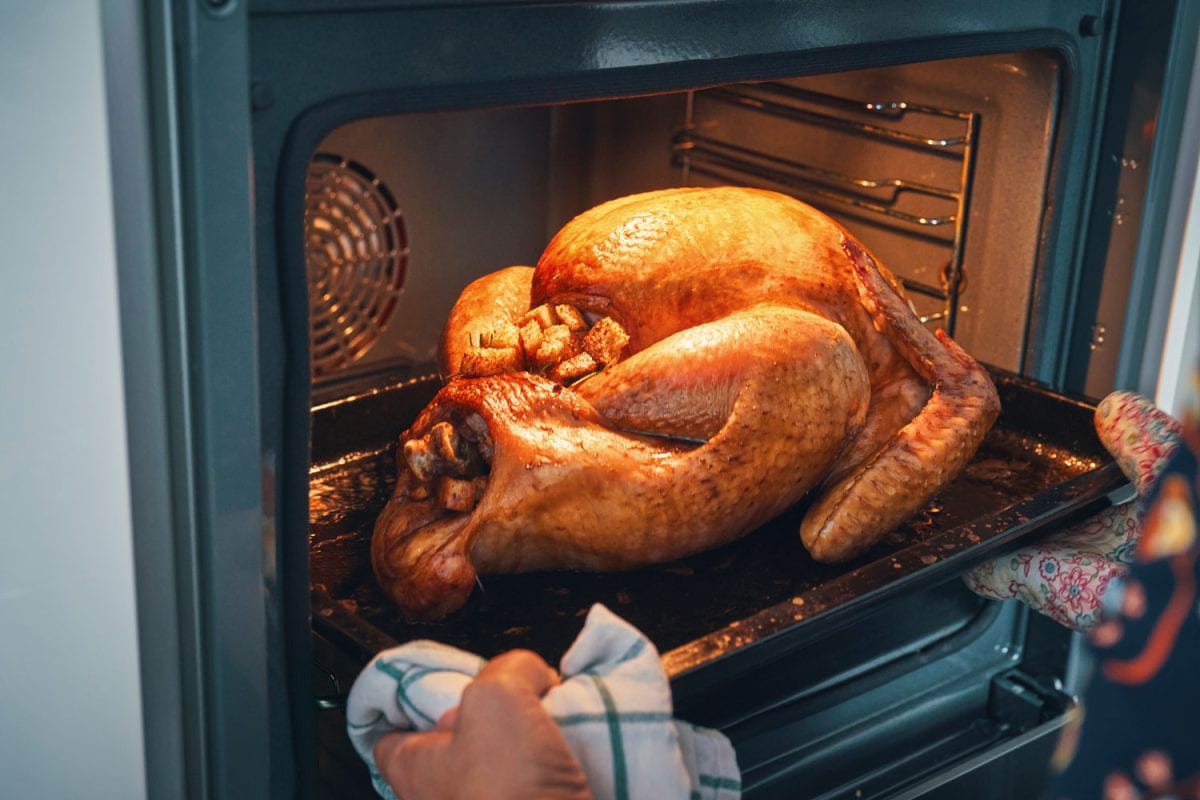
In this article, we learned to look for the signs that your turkey is breast-side up. We also learned the pros and cons of cooking your turkey both breast side up and down.
While breast side down will provide juicier breasts, there is no easy way to flip a hot turkey.
Made it to the end? Check out these helpful related cooking posts below!
How Long Will A Turkey Last In The Freezer? [Everything You Need To Know!]
What's The Best Oil To Deep Fry Turkey?

